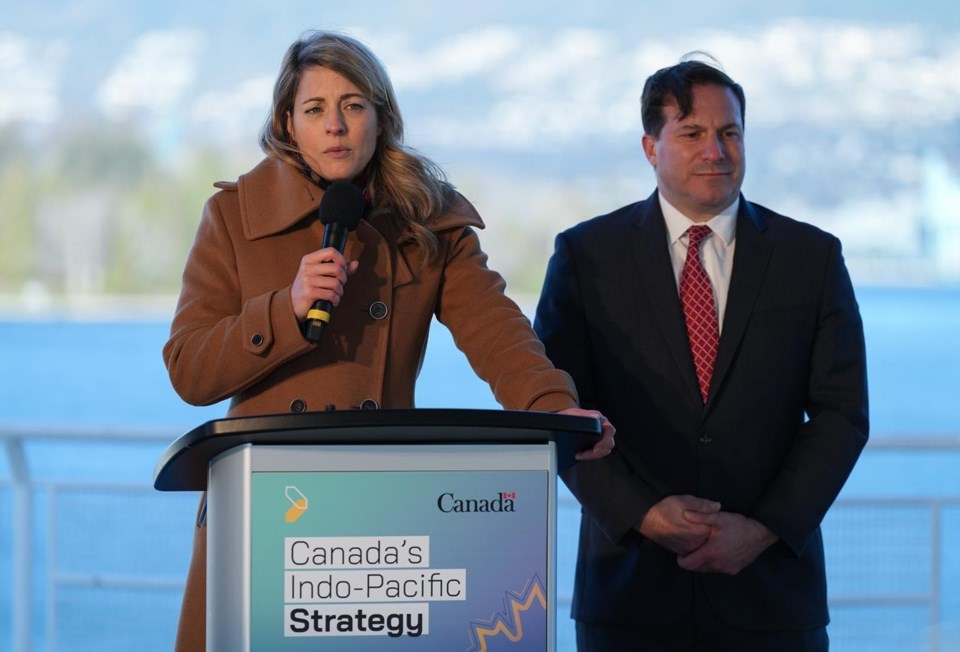OTTAWA — Agriculture commodity groups are applauding the Liberal government’s long-awaited Indo-Pacific strategy and hoping it will lead to more, and better, free trade deals.
The strategy, announced Sunday in Vancouver, includes commitments to increase military spending and build closer ties with countries such as India.Â
Included in the $2.3-billion plan is a promise to earmark $244.1 million for improving trade between Canada and countries in the region.Â
While no specific targets or benchmarks are included in the strategy, and questions remain over how effectively the dollars will be spent, the heightened focus on the region is being celebrated by agriculture groups in Canada.
Todd Lewis, a Saskatchewan-based farmer and a vice-president of the Canadian Federation of Agriculture, says it is "good news for Canadian agriculture."
"It is another signal that the government of Canada is serious about trying to establish both trade deals as well as trade relationships," he said. "It is something that we hope will grow and continue to be successful."
Canada’s Indo-Pacific strategy seeks new trading relationships, as well as the expansion of the Comprehensive and Progressive Agreement for Trans-Pacific Partnership, or CPTPP, by adding new members.Â
The pact, which already includes heavyweights such as Australia, Japan and Mexico, entered into force four years ago. The United Kingdom, the Philippines, Indonesia, Taiwan and China have applied for membership.
Leif Carlson, director of market intelligence and trade policy for Cereals Canada, said the Indo-Pacific strategy should be viewed through a long-term lens as a way to deepen those trade relationships.Â
"I hope that the Indo-Pacific strategy is going to be complementary to the CPTPP," he said.Â
Some agricultural producers say the deal has not lived up to expectations and its implementation has been slow.Â
"Some of these trade deals aren't maybe what they thought they would be, or what we hoped they would be, and a little bit slow getting off the ground," said Lewis.Â
Jim Everson, president of the Canola Council of Canada, said he hopes the strategy "builds on the CPTPP" and adds momentum to a prospective deal with the Association of Southeast Asian Nations, known as ASEAN.
Canada has been trying to strike a trade deal with ASEAN, a bloc of 10 countries in Southeast Asia, since 2017.
After a public consultation on a potential deal in 2018, the two parties agreed to proceed with negotiations in 2021, with Prime Minister Justin Trudeau announcing funding to help ASEAN nations take part in trade-deal negotiations at a summit held by the bloc earlier this month.Â
Canada has also moved toward negotiating more bilateral deals in the region, including with India and ASEAN member Indonesia.Â
This report by The Canadian Press was first published Nov. 29, 2022.
David Fraser, The Canadian Press



